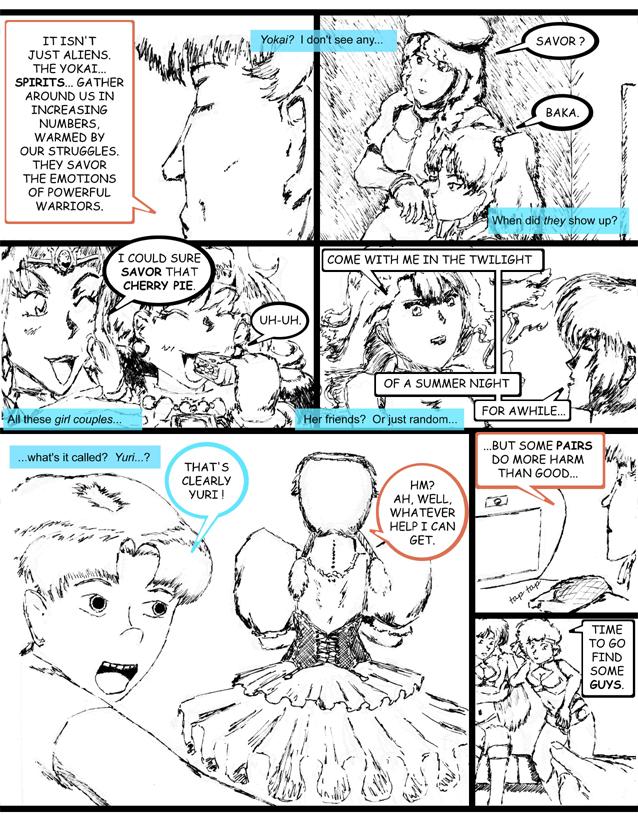Misfire Reactional

Author notes
06-13
aquapermanence onChapter 6, page 13.
The girl couples: Quon and Ruri from earlier, Naga and Lina from the comedic fantasy Slayers, Mireille and Kirika from the action series Noir singing "Key of the Twilight" from .hack//SIGN, and Yuri and Kei from the sci-fi adventure series Dirty Pair.
"Yuri" is a slang term referring to girl-girl romantic pairings. The major difference between anime and American film portrayals of homosexuality seems to stem from how (or whether) it's addressed in terms of the larger society. While American stories often use the inclusion of an overtly homosexual character as a mouthpiece for conflict between individual rights and societal expectations, Japanese stories tend to limit the discussion to the romantic conflict (if any) at hand, and presents any individual's opinion on the subject of sexuality itself as just that: an individual's opinion.
I find this observation more than a little ironic, since the major conflicts of anime and manga tend to revolve around the disagreement of values between an individual and society, while American shows often feature characters from diverse backgrounds (perhaps reflecting the American self-perception of cultural diversity) and the disagreements in values that arise from different experience and upbringing.
The movie "Guess Who's Coming to Dinner" and the miniseries "Roots" are both excellent illustrations of groups of characters who hold conflicting sets of values at the same time. In both stories, each main character is faced with the question of whether blacks and whites in the US should be treated with or without prejudice to their race. Depending on each character's background, they will arrive at a different conclusion–but arriving at a conclusion will not make the underlying conflict in values disappear. This same sort of scenario gets played out to various extents in pretty much anything where characters are set up as "in-group" and "other", be it along lines of wealth, fame, occupation, religion, sexuality, or origin.
What I think this observation says about the difference between Japanese and American presentations of homosexuality is that Japanese literature largely regards it as an element of character construction (in service to the story), whereas American literature sees it as a major topic of conflict (and will craft and present stories around the idea of this conflict).
On the one hand all it amounts to is a difference in the way story elements are weighted and distributed across cultures. However, this distribution itself is often a point of contention and stress between people, particularly people who are concerned with the type and availability of representation of various demographics.
None of the girl-couple characters on this page are overtly homosexual. So why does Degami even notice them as couples? It could just be the conspicuous presence of all these pairs of girls around. It could be a difference in Japanese and American portrayal of unmarried women in close working relationships. Or it could be that the storytellers present these characters in a way that you're free to assume what you like about them… so if you go searching for evidence to support a theory, you'll find it. But not proof.


Comments
Please login to comment.
Login or Register${ comment.author }} at
${ comment.author }} at